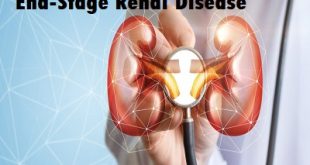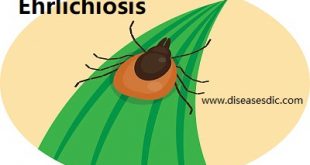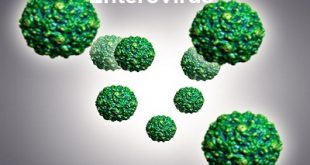What is Endometriosis?
Endometriosis is a common condition that affects women during the reproductive years. It occurs when normal tissue from the uterine lining, the endometrium, attaches to organs in the pelvis and begins to grow. This displaced endometrial tissue causes irritation in the pelvis that may lead to pain and infertility.
During each menstrual period, most of the uterine lining and blood is shed through the cervix and into the vagina. However, some of this tissue enters the pelvis through the fallopian tubes. Women who develop endometriosis simply may be unable to clear the pelvis of these cells. It mainly affects women during their reproductive years. It can affect women from every social group and ethnicity. Endometriosis is not an infection and it is not contagious. Endometriosis is not cancer.
Types of endometriosis
There are several types of endometriosis:
- Peritoneal endometriosis: Peritoneal implants that consist of glandular and stromal tissue and respond to hormonal changes associated with the menstrual cycle showing cyclic changes similar but not identical to the normal endometrium. These implants heal by fibrosis.4
- Ovarian endometriomas: Benign, estrogen-dependent cyst also known as “chocolate cyst” that contains thick, old blood that appears as a brown fluid. This results from recurrent chronic bleeding from the endometriotic implants. In long-standing endometriomas, the endometriotic tissue is gradually replaced by fibrotic tissue.
- Deep endometriosis (DE): This form of endometriosis is characterized by proliferative fibromuscular tissue with sparse endometrial grandular and stromal tissue (akin to adenomyosis), with no surface epithelium. DE does not show significant changes during the menstrual cycle. Growth of endometriotic nodules are usually found in the uterosacral ligaments, the rectovaginal space, the upper third of the posterior vaginal wall, the bowel, and the urinary tract.4,6
- Adenomyosis: Uterine endometriosis presents as asymmetrical uterine enlargement.
- Disseminated endometriosis: Growth of endometriotic tissue in various organs in the body including at the scar site.
History
Endometriosis was first discovered microscopically by Karl von Rokitansky in 1860, although it was documented in medical texts more than 4,000 years ago. The Hippocratic Corpus outlines symptoms similar to endometriosis, including uterine ulcers, adhesions, and infertility.
Historically, women with these symptoms were treated with leeches, straitjackets, bloodletting, chemical douches, genital mutilation, pregnancy (as a form of treatment), hanging upside down, surgical intervention, and even killing due to suspicion of demonic possession. Hippocratic doctors recognized and treated chronic pelvic pain as a true organic disorder 2,500 years ago, but during the middle Ages, there was a shift into believing that women with pelvic pain were mad, immoral, imagining the pain, or simply misbehaving.
The symptoms of inexplicable chronic pelvic pain were often attributed to imagined madness, female weakness, promiscuity, or hysteria. The historical diagnosis of hysteria, which was thought to be a psychological disease, may have indeed been endometriosis.
The idea that chronic pelvic pain was related to mental illness influenced modern attitudes regarding women with endometriosis, leading to delays in correct diagnosis and indifference to the patients’ true pain during the 20th century.
Prevalence and incidence of endometriosis
- 1 in 10 women of reproductive age in the UK suffer from endometriosis.
- 10% of women worldwide have endometriosis – that’s 176 million worldwide.
- The prevalence of endometriosis in women with infertility be as high as to 30–50%.
- Endometriosis is the second most common gynaecological condition in the UK.
- Endometriosis affects 1.5 miliion women, a similar number of women affected by diabetes.
- On average it takes 7.5 years from onset of symptoms to get a diagnosis.
- Endometriosis costs the UK economy £8.2bn a year in treatment, loss of work and healthcare costs
Causes of endometriosis
Although the exact cause of endometriosis is not certain, possible explanations include:
- Retrograde menstruation. In retrograde menstruation, menstrual blood containing endometrial cells flows back through the fallopian tubes and into the pelvic cavity instead of out of the body. These displaced endometrial cells stick to the pelvic walls and surfaces of pelvic organs, where they grow and continue to thicken and bleed over the course of each menstrual cycle.
- Transformation of peritoneal cells. In what’s known as the “induction theory,” experts propose that hormones or immune factors promote transformation of peritoneal cells cells that line the inner side of your abdomen into endometrial cells.
- Embryonic cell transformation. Hormones such as estrogen may transform embryonic cells in the earliest stages of development into endometrial cell implants during puberty.
- Surgical scar implantation. After a surgery, such as a hysterectomy or C-section, endometrial cells may attach to a surgical incision.
- Endometrial cells transport. The blood vessels or tissue fluid (lymphatic) system may transport endometrial cells to other parts of the body.
- Immune system disorder. It’s possible that a problem with the immune system may make the body unable to recognize and destroy endometrial tissue that’s growing outside the uterus.
Risk Factors for Endometriosis
- Early menarche
- First-degree relative with endometriosis
- Late menopause
- Low body mass index
- Müllerian anomalies
- Nulliparity
- Prolonged menstruation (> five days)
- Shorter lactation intervals
- Shorter menstrual cycles (< 28 days)
- White race (compared with black race)
Women who do experience symptoms may have one or more conditions:
- Painful periods (dysmenorrhoea) which do not respond to over-the-counter pain relief. Some women have heavy periods
- Pain during or after sexual intercourse (dyspareunia)
- Painful defecation (dyschezia) that may be cyclic or semi-cyclic.
- Painful micturition (dysuria)
- Lower abdominal pain
- chronic pelvic pain
- Difficulty in getting pregnant or infertility
- Pain related to the bowels and bladder (with or without abnormal bleeding)
- Chronic fatigue
- Ovulation pain
- Irritable bowel syndrome
- Cyclical or perimenstrual symptoms (e.g. bowel or bladder associated) with or without abnormal bleeding
- Infertility
Complications
Complications include:
- Infertility, which can affect 50 percent of those with the condition.
- Increased risk of developing ovarian cancer or endometriosis-associated adenocarcinoma
- Ovarian cysts
- Inflammation
- Scar tissue and adhesion development
- Intestinal and bladder complications
Diagnosis
If you have any symptoms of endometriosis or are having difficulty becoming pregnant, contact your gynecologist. There are several things she can do to determine if you have endometriosis, including:
- Pelvic exam
- Ultrasound exam
- MRI
- Laparoscopy
- Biopsy
Treatment and medications
Understandably, you want quick relief from pain and other symptoms of endometriosis. This condition can disrupt your life if it’s left untreated. Endometriosis has no cure, but its symptoms can be managed.
Medical and surgical options are available to help reduce your symptoms and manage any potential complications. Your doctor may first try conservative treatments. They may then recommend surgery if your condition doesn’t improve.
It may be frustrating to get diagnosis and treatment options early in the disease. Because of the fertility issues, pain, and fear that there is no relief, this disease can be difficult to handle mentally. Consider finding a support group or educating yourself more on the condition. Treatment options include:
Pain medications
You can try over-the-counter pain medications such as ibuprofen (Advil), but these aren’t effective in all cases.
Hormonal therapy
Taking supplemental hormones can sometimes relieve pain and stop its progression. This therapy helps your body to regulate the monthly changes in hormones that promote the tissue growth that occurs when you have endometriosis.
Hormonal contraceptives
Hormonal contraceptives decrease fertility by preventing the monthly growth and buildup of endometrial tissue. Birth control pills, patches, and vaginal rings can reduce or even eliminate the pain in less-severe endometriosis.
The medroxyprogesterone (Depo-Provera) injection is also effective in stopping menstruation. It stops the growth of endometrial implants. It relieves pain and other symptoms. This may not be your first choice, however, because of the risk of decreased bone production, weight gain, and increase in the incidence of depression in some cases.
Gonadotropin-releasing hormone (GRNH) agonists and antagonists
Women take what are called gonadotropin-releasing hormone (GnRH) agonists and antagonists to block the production of estrogens that stimulate the ovary. Estrogen is the hormone that’s mainly responsible for the development of female sexual characteristics. This prevents menstruation and creates an artificial menopause. The therapy has side effects like vaginal dryness and hot flashes. Taking small doses of estrogen and progesterone at the same time can help to limit or prevent these symptoms.
Danazol
Danazol is another medication used to stop menstruation and reduce symptoms. While taking danazol, the disease may continue to progress. Danazol can have side effects including acne and hirsutism, which is abnormal hair growth on your face and body. Other drugs are being studied that may improve symptoms and slow disease progress.
Conservative surgery
Conservative surgery is for women who want to get pregnant or experience severe pain and for whom hormonal treatments aren’t working. The goal of conservative surgery is to remove or destroy endometrial growths without damaging your reproductive organs.
Laparoscopy, a minimally invasive surgery, is used to both visualize, diagnose, and remove the endometrial tissue. Your surgeon will make small incisions in your abdomen to remove the growths surgically or to burn or vaporize them. Lasers are commonly used these days as a way destroy this “out of place” tissue.
Last-resort surgery (hysterectomy)
Rarely, your doctor may recommend a total hysterectomy as a last resort if your condition doesn’t improve with other treatments. During a total hysterectomy, your surgeon will remove your uterus and cervix. Your doctor will also remove your ovaries because they make estrogen, and estrogen causes the growth of endometrial tissue. They will also remove visible implant lesions.
This radical approach to treatment is used only when other treatment approaches have failed, and the pain and inflammation are interfering with quality of life. This procedure will stop the cycle of menstruation, and symptoms of endometriosis should reduce. There is no guarantee that all pain will go away, however.
You’ll be unable to get pregnant after a hysterectomy. Get a second opinion before agreeing to surgery if you’re thinking about starting a family.
Prevention of Endometriosis
Endometriosis cannot be prevented. This is in part because the cause is poorly understood. But long-term use of birth control hormones (patch, pills, or ring) may prevent endometriosis from becoming worse.
 Diseases Treatments Dictionary This is complete solution to read all diseases treatments Which covers Prevention, Causes, Symptoms, Medical Terms, Drugs, Prescription, Natural Remedies with cures and Treatments. Most of the common diseases were listed in names, split with categories.
Diseases Treatments Dictionary This is complete solution to read all diseases treatments Which covers Prevention, Causes, Symptoms, Medical Terms, Drugs, Prescription, Natural Remedies with cures and Treatments. Most of the common diseases were listed in names, split with categories.








my wife has endometriosis I want her to conceive,please help.
consult a gynecologist to get a cure.
pls can you update something on endometrial cancer
please, is endometriosis same as ovarian cyst, if yes will I ever be able to get pregnant?
please consult a doctor.
can I take primolut n for endo
yes, you can take. But before taking please consult a doctor to know the dosage based on your severity of the illness.
if it is critical to get consive by doing intercourse is it possible of getting a child in mother’s ovary itself by infertilization
It is not possible to get fertilization in the ovary itself. By using In Vitro fertilization process a woman can get conceive easily.
will I get pregnant if I have endometriosis
If there is good treatment then you can get pregnant.
Wen my doctor confirmed am having endometritis cos I cannot be able to get pregnant n my menstrual period has an odour…he prescribed RANICEF, DOXYCYCLINE AND FLAGYL…am still on d drugs…do u think I can be able to get pregnant after dis drugs? must I treat my husband?
Please consult with any obstetrics specialist
Endometriosis can be cured through herbs
No cure is available for endometriosis. It can improve the condition and reduce pain by herbs.
Definite cure to most ailments can be achieved through use of herbs
the best information
i impresed your apps
I was injected on January 2018 depo after three months I did not have periods for four months the doctor told me to use femiplans ,after one month ma periods started normally but up to now am not conceiving what could be the problem
Please consult a gynecologist.
I have endometriosis,can surgery be an option to remove it.
laparotomy is the option to remove it.
Since I got birth I don’t go on monthly periods its now 5 years and am having some sever pain in my stomach every month end. What could be the problem?? Please help I cant pregnant I want a baby
Please consult a gynecologist.
I can’t get pregnant
Please consult a gynecologist.
I’m 23 years old now and I’m having endomet what will I do
Please consult a gynecologist.
Good day,
I was hoping getting pregnant, towards the end of my ovulation we meet,three days later,I had symptoms of being pregnant,we are both happy cos we’ve been trusti God for such.
To my surprise,I saw my period the next month:16/3/2019 but complete black blood which is the 1st time am experiencing it.
Up to now,I speed out,my Tommy keep increasing,mostly feels dazzling,& sleep more.
I then went for pelvic scan, result was Endomtritis no pregnant.
Wat can b de cos of all this pregnancy sign?
The foremost mistake you have done was not confirmed your pregnancy at the time you manifested the symptoms. Such symptoms might be of endometriosis. Please consult a doctor asap for appropriate advice.
so does that mean you won’t have children when you have endometriosis?
Women with endometriosis have trouble with fertility and struggle to get pregnant.
Am having discomfort at my left lower abdomen for years now,It occurs a day or 2day twice in a month ,my doctor couldn’t find the cause after consulting series of text on me,he later concluded I should reduce the intake of sugar and cold things. but am worried,I need a saviour
Please consult a gastroenterologist.
I have been suffering from this ailments for many years, all the drugs given to me are just not effective. Please what can I do? Is there any drug I can use to cure it or reduce the pain?
please consult a doctor ASAP.
how can my wife conceive baby female while she have such illnesses?
Please consult a gynecologist.
I need help since 20 years now I don’t see my period without drugs
Please consult a gynecologist.